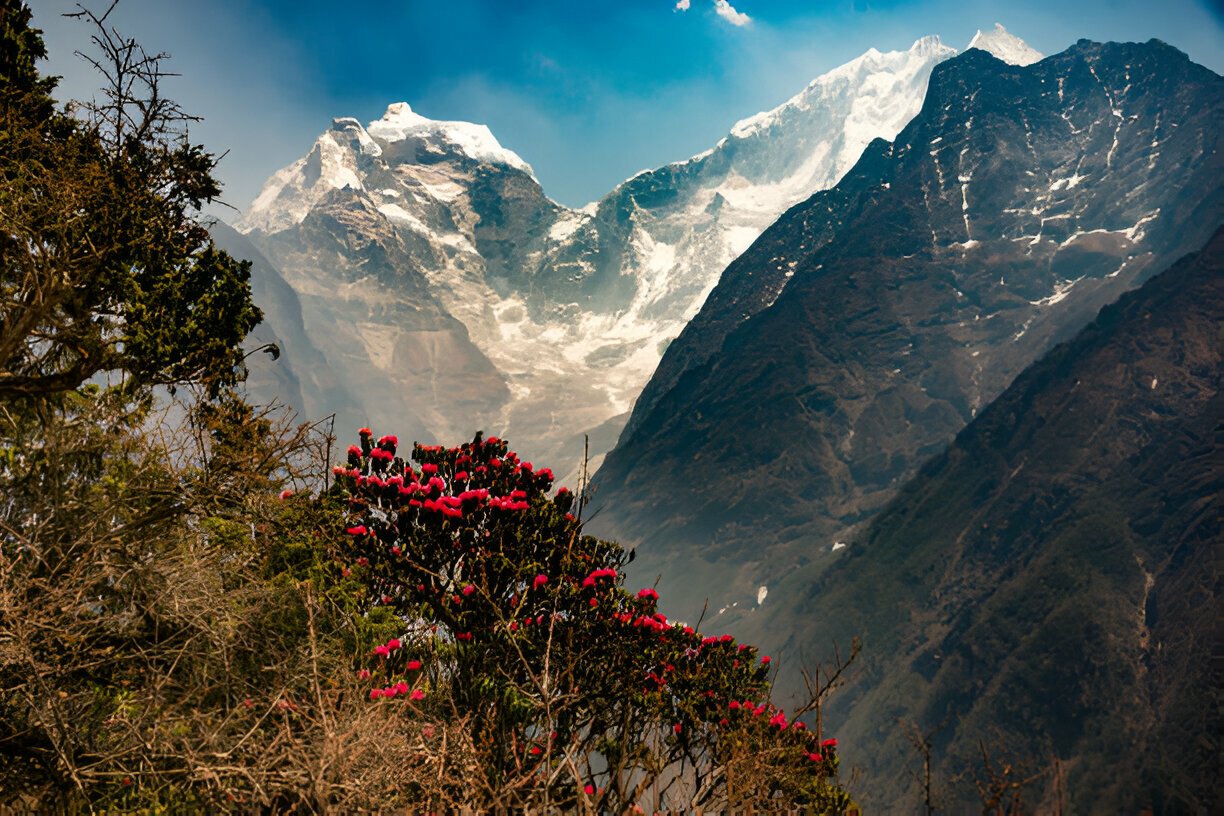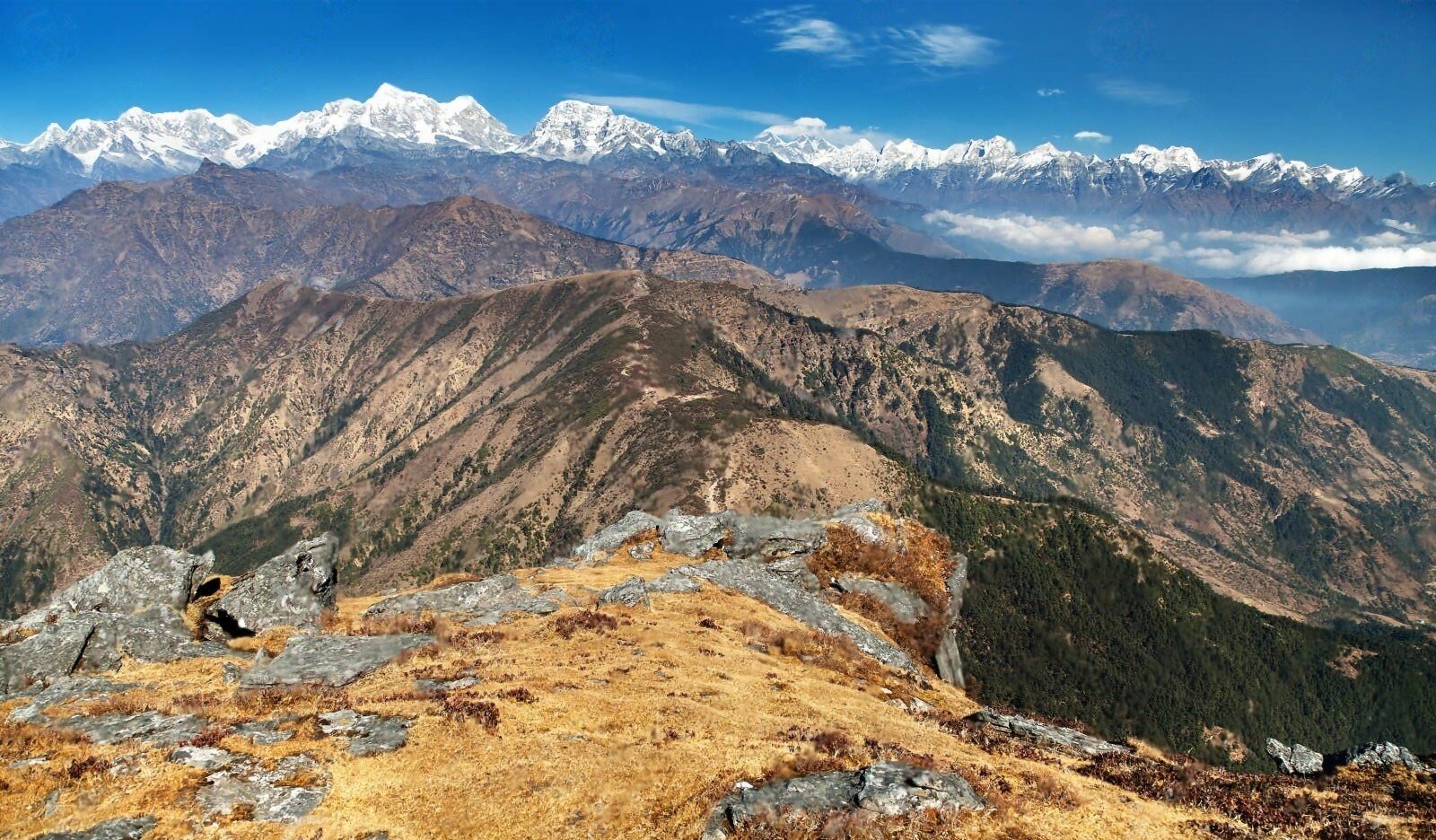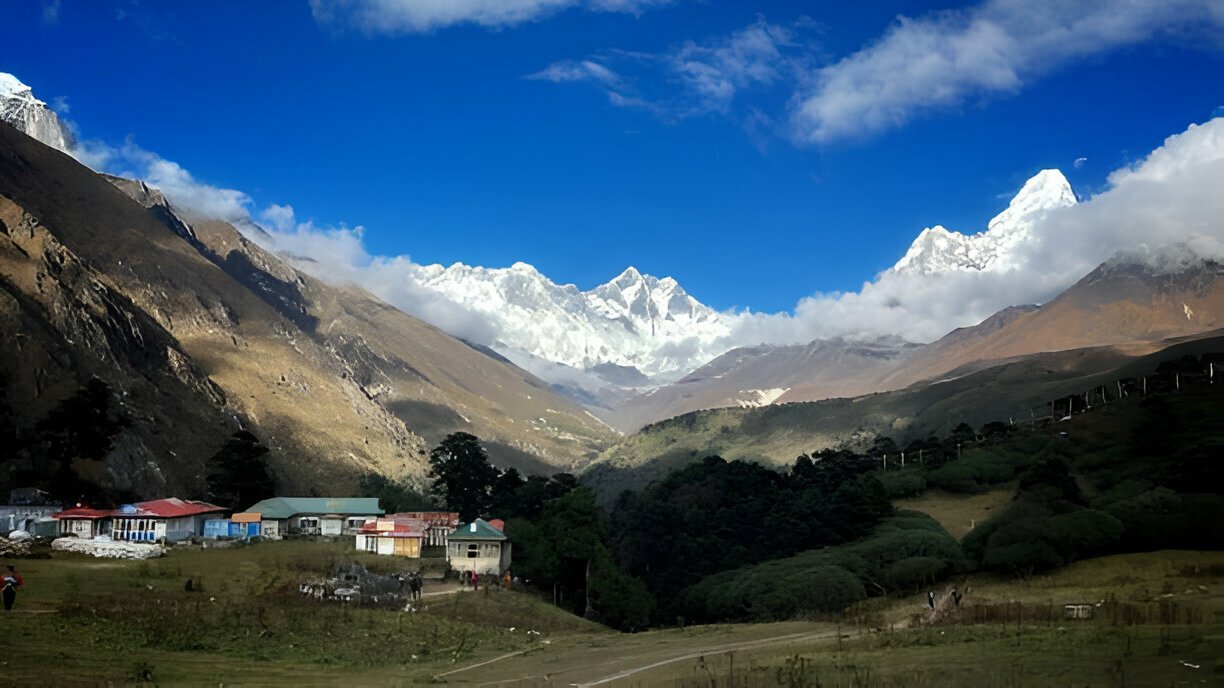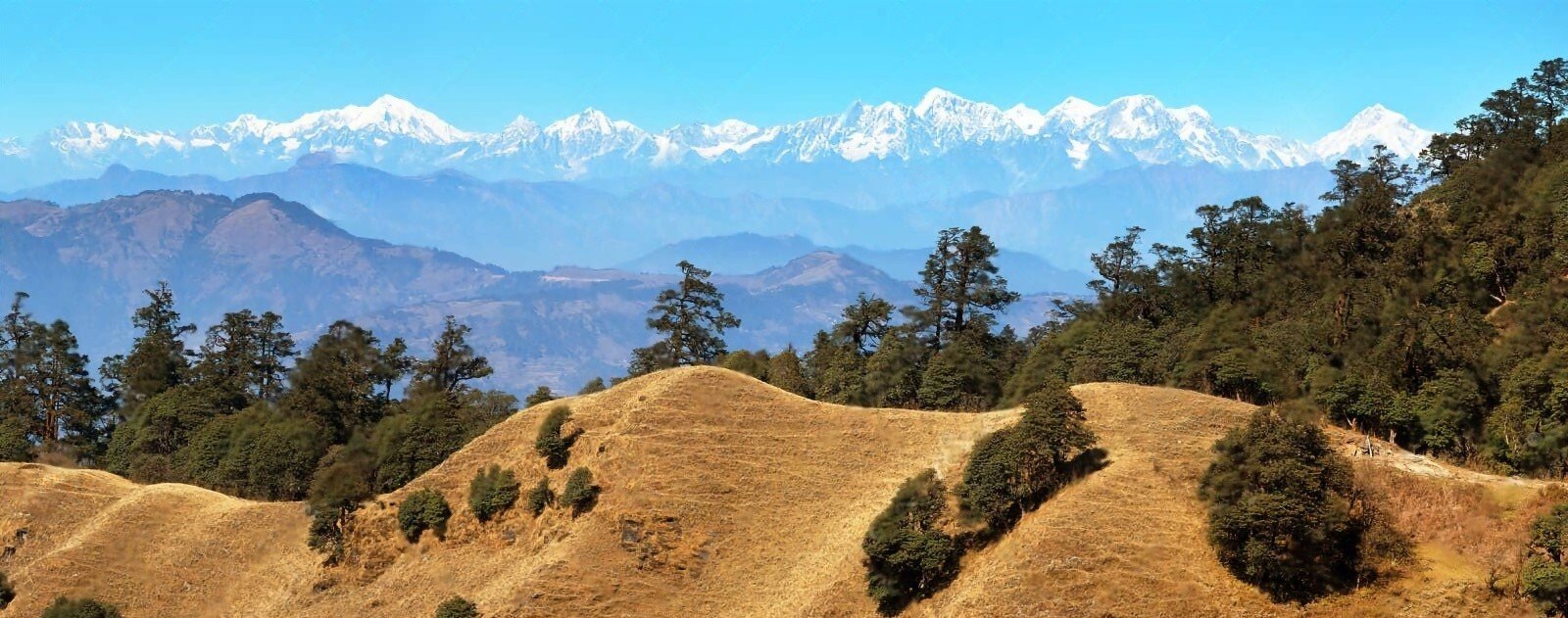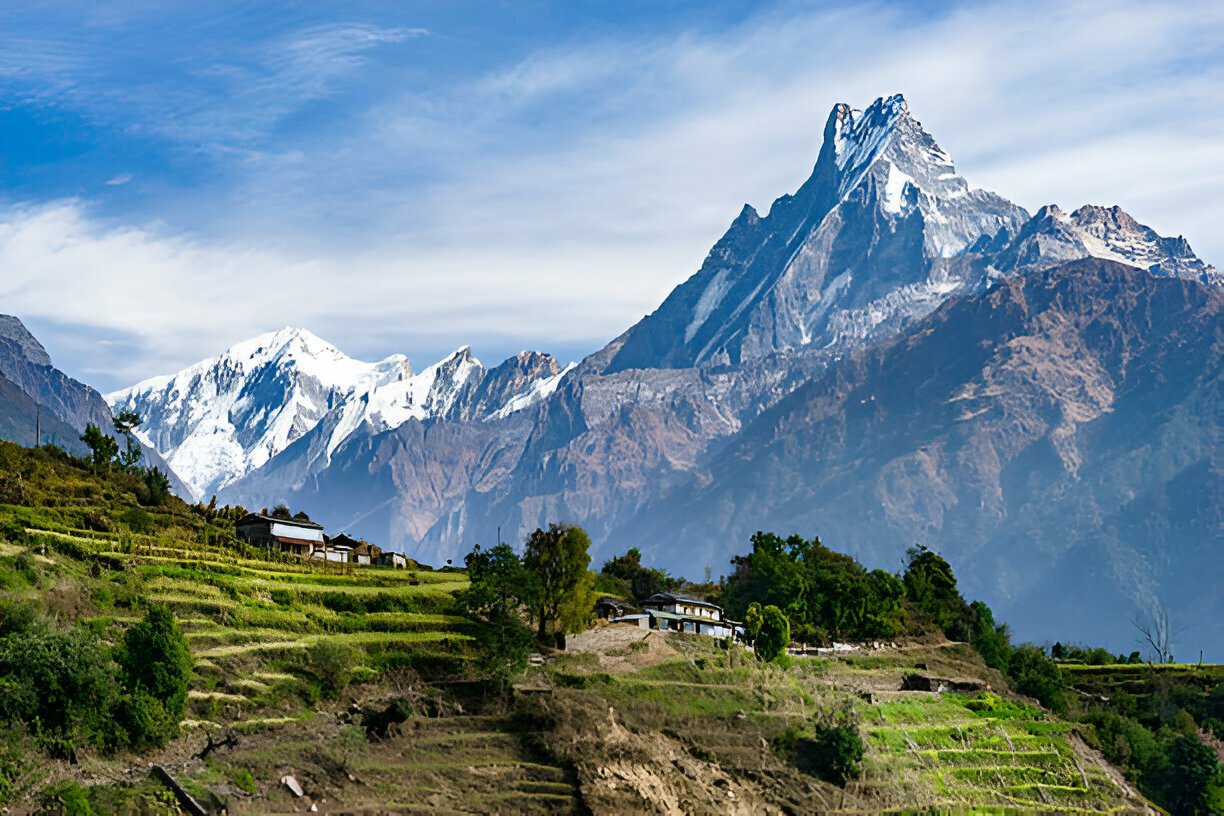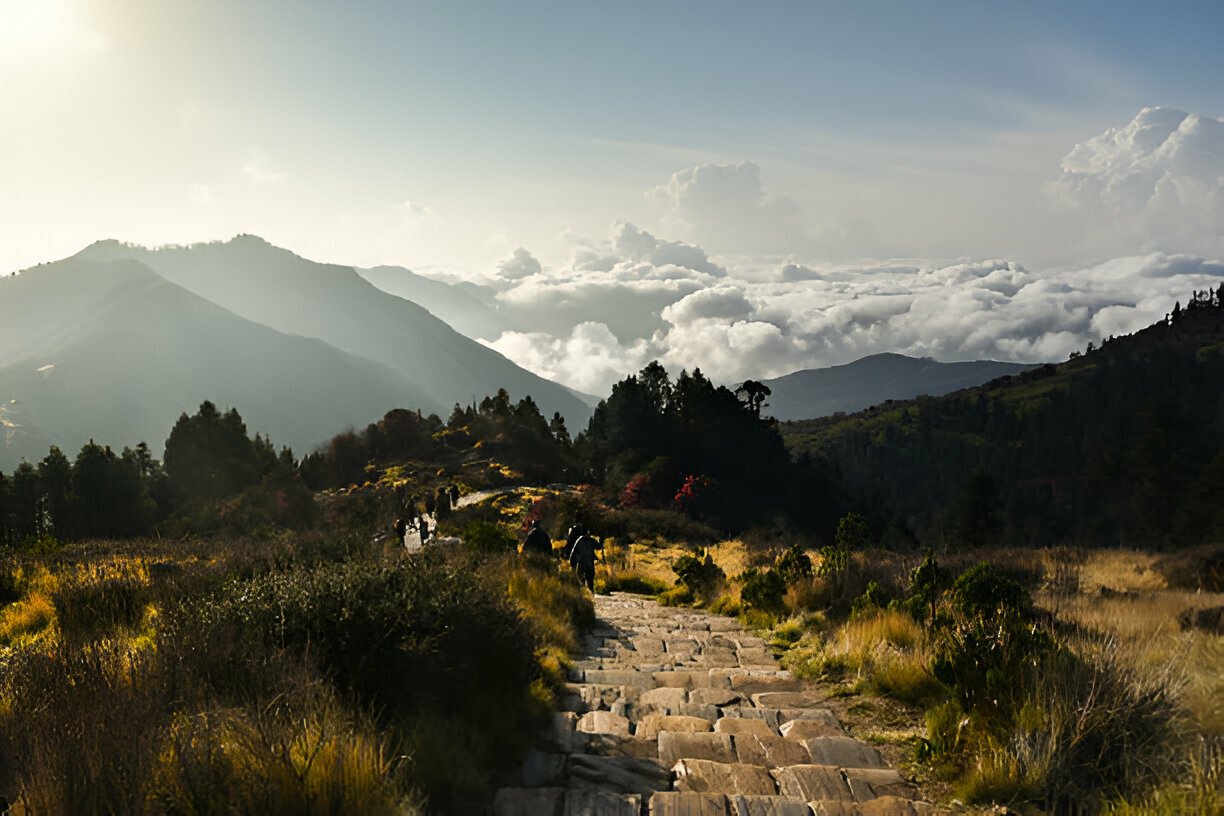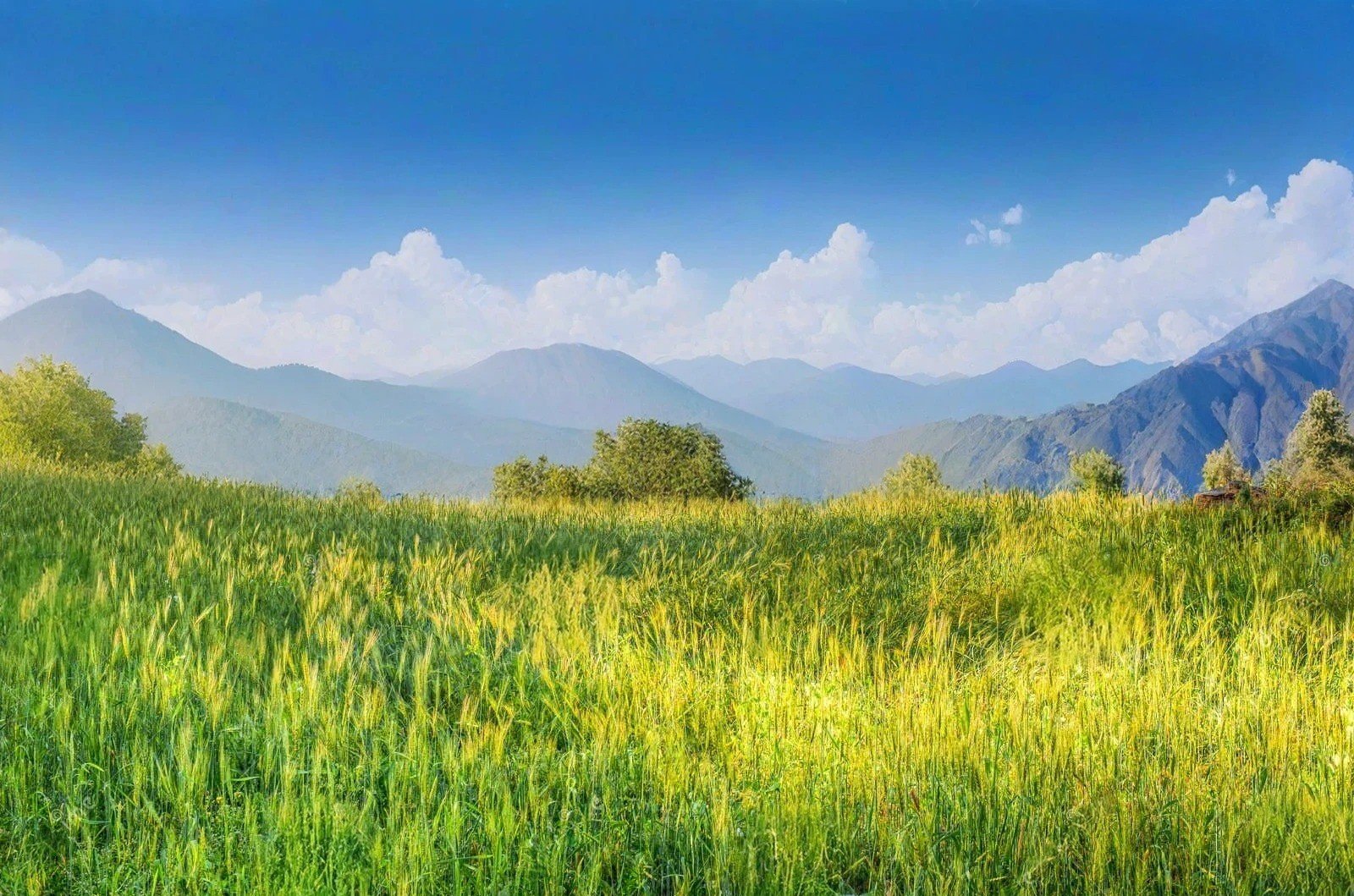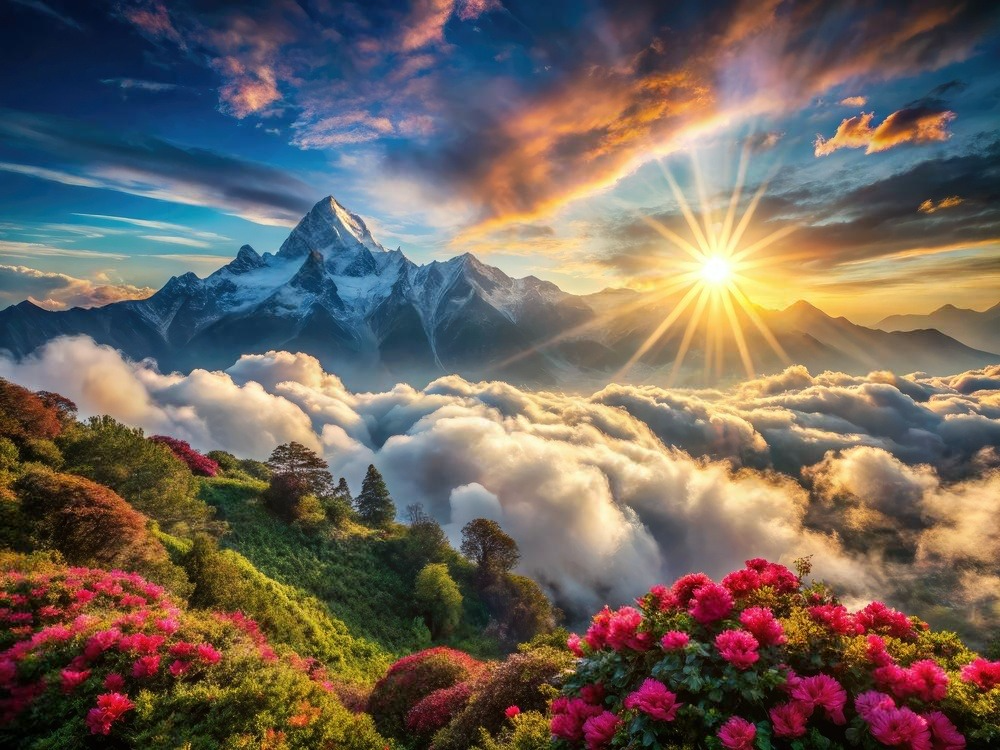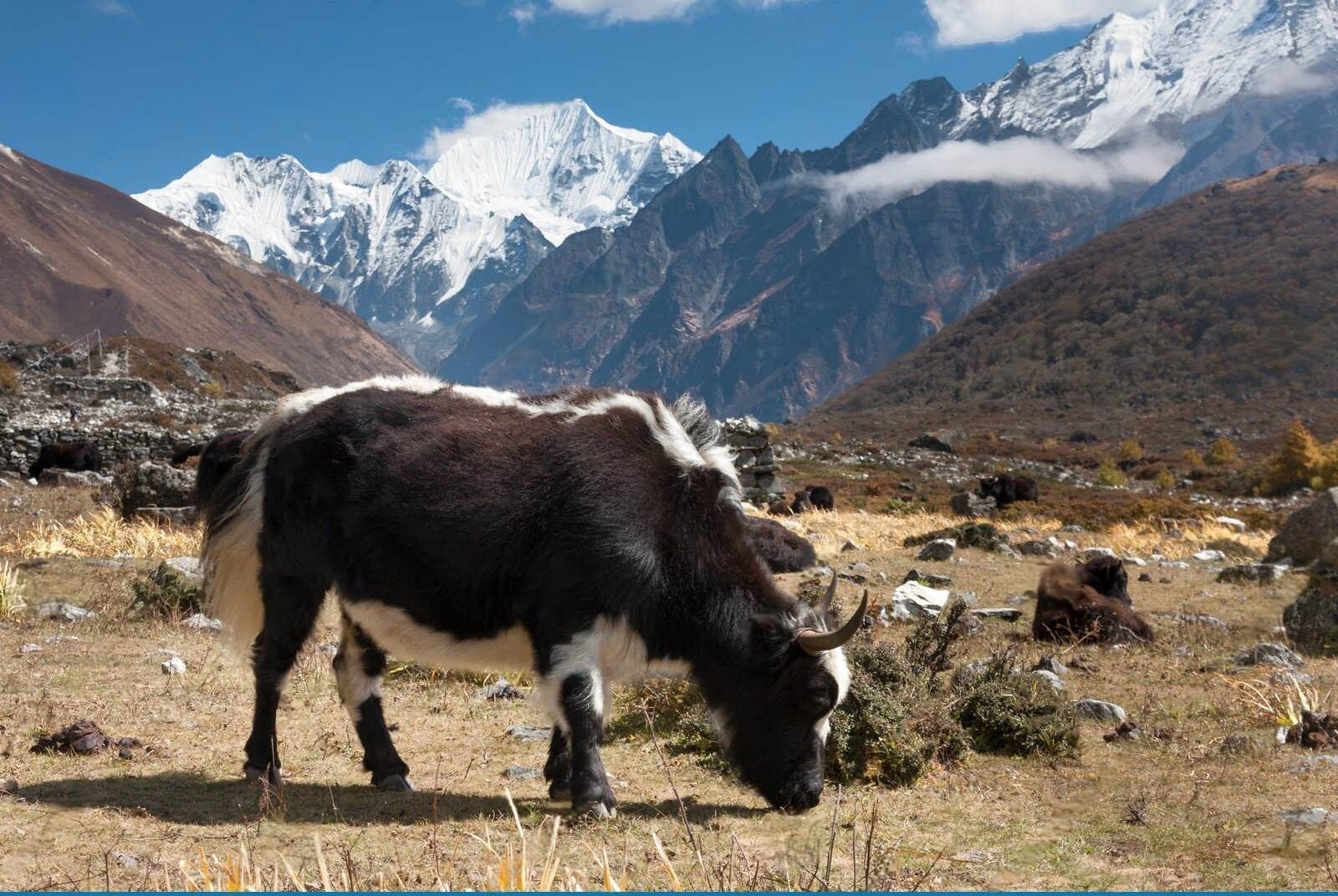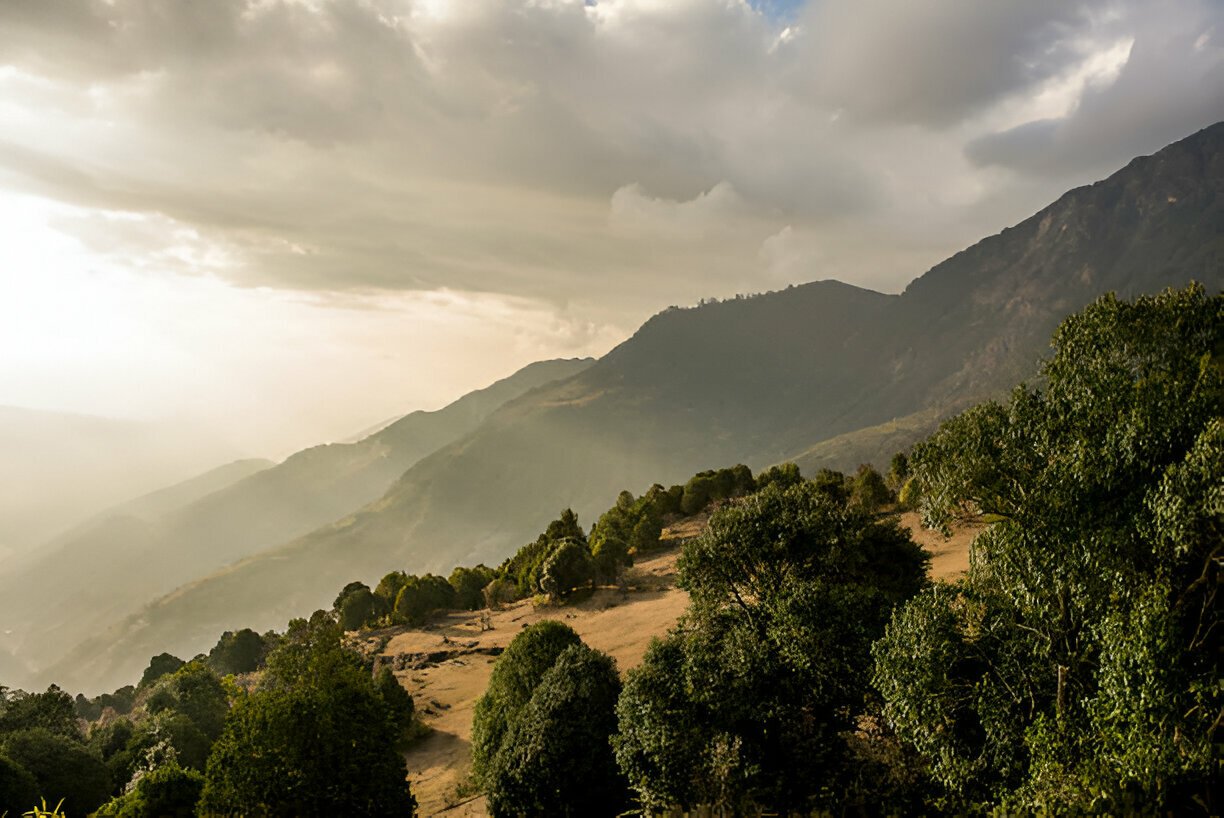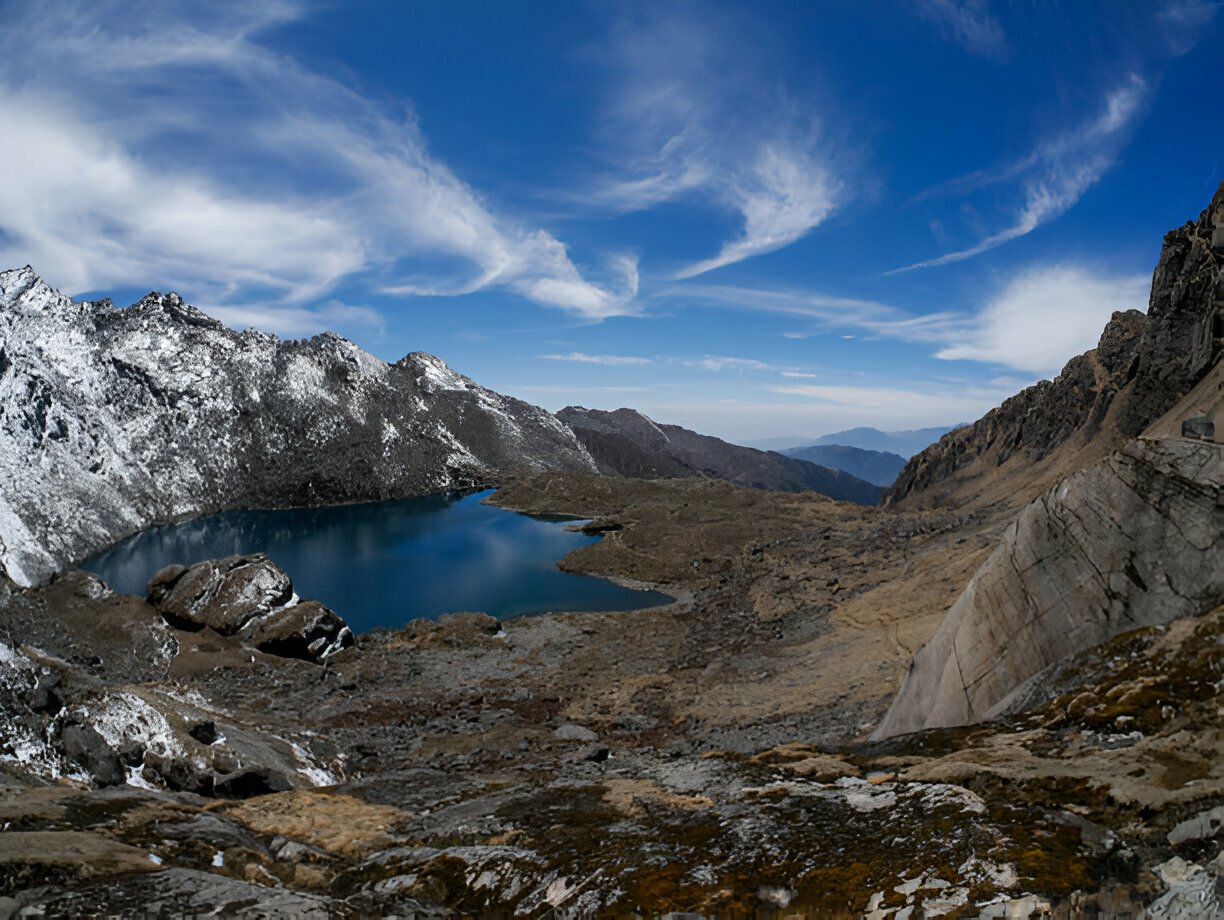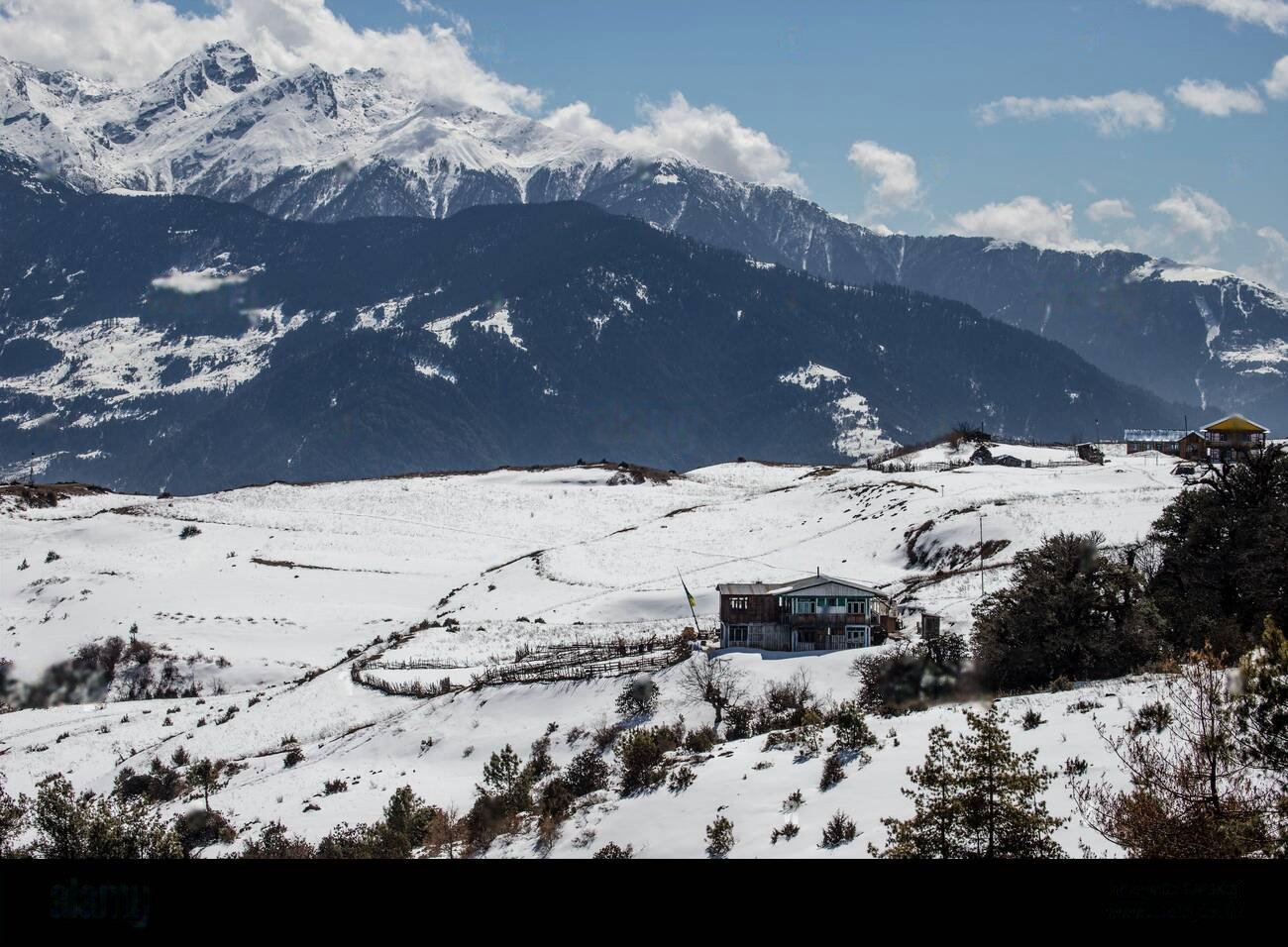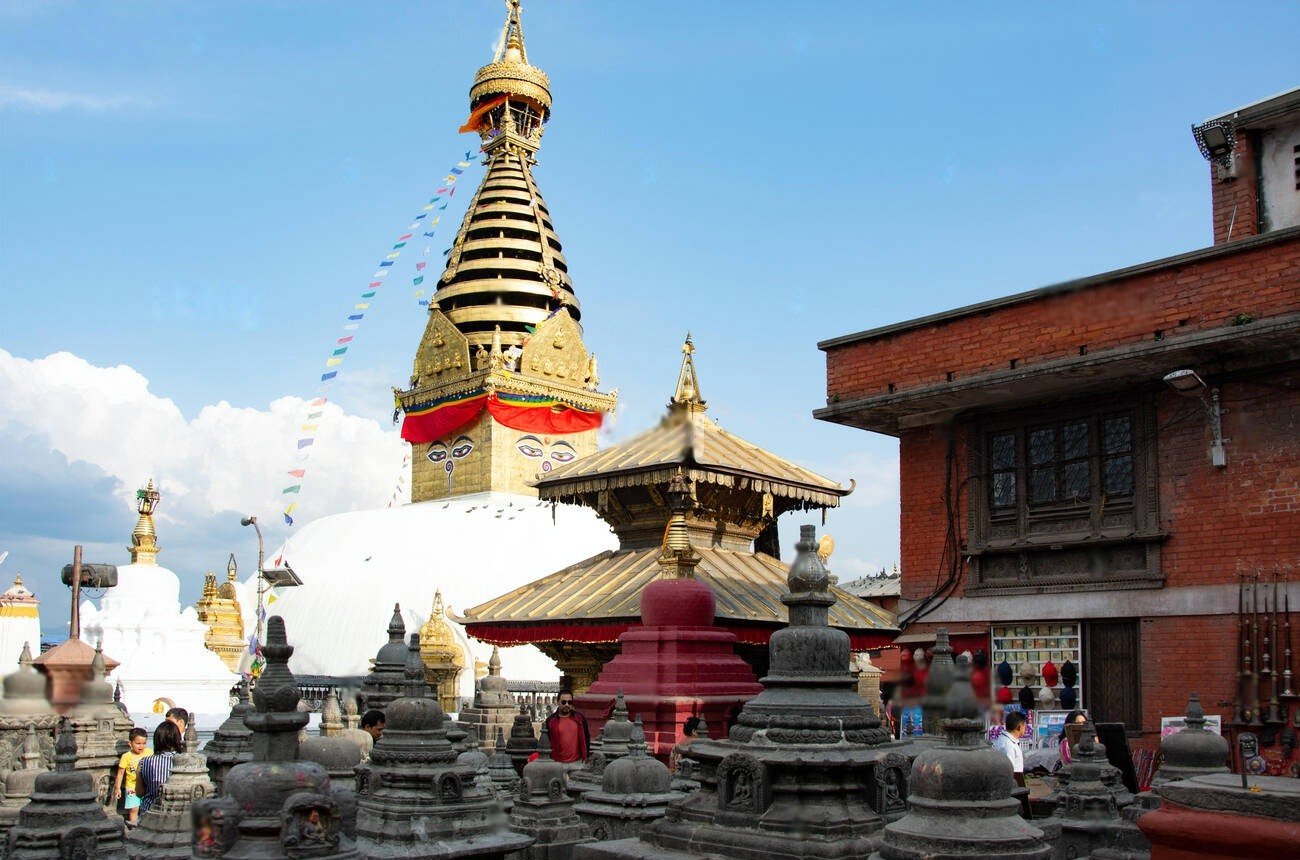 Detailed Information
Detailed Information
Visiting Dakshinkali Mandir offers an immersive cultural experience that penetrates the very essence of Nepal's religious practices and traditions. What sets this temple apart from other religious sites in the Kathmandu Valley is its raw, unfiltered connection to ancient sacrificial traditions that have largely disappeared from urban Hindu practice elsewhere.
As you approach the temple, descending the stone steps into the ravine, the atmosphere shifts perceptibly. The cool air carries the scent of incense, flowers, and occasionally the earthy aromas of sacrificial offerings. The sound of rushing water from the nearby stream creates a natural soundtrack that has accompanied worshippers for generations. This sensory introduction prepares visitors for the temple's distinctive spiritual intensity.
The main shrine, though relatively modest in size compared to monuments like Pashupatinath Temple, commands powerful presence through its symbolism and the devotional energy surrounding it. The image of Kali, dark-skinned with fierce countenance, embodies the Hindu understanding of time, transformation, and the ultimate dissolution of all things. Devotees approach with reverence, offering flowers, vermilion powder, coins, and on specific days, animal sacrifices most commonly chickens and goats believed to appease the goddess and gain her favor.
For many visitors, witnessing the animal sacrifices can be challenging, yet understanding this practice requires contextualizing it within Hindu cosmology, where all life is seen as cyclical and sacrifice represents an offering of life force (prana) to the divine. The practice is conducted with specific rituals and prayers, and the meat is never wasted it becomes prasad (blessed food) shared among devotees. The temple priests and attendants facilitate these rituals with practiced efficiency, guiding worshippers through the proper procedures.
Between the main temple and the surrounding areas, visitors can observe how the sacred and secular aspects of life intertwine. Families gather for picnics along the stream after completing their offerings. Vendors sell marigold garlands, red tika powder, and other ritual items. The atmosphere shifts between solemn worship and social gathering, revealing how religious practice in Nepal remains deeply integrated with community life.
Throughout the day, the temple maintains this dynamic rhythm of devotion. Early mornings see serious devotees performing extended rituals, while midday brings more casual visitors and tourists. The temple comes alive most vibrantly on Tuesdays and Saturdays, the traditional days for Kali worship, when the full spectrum of devotional activities can be witnessed. This living tradition offers visitors a window into practices that have remained remarkably consistent despite centuries of social change, making Dakshinkali not just a temple but a cultural time capsule of Nepal's religious heritage.
Visiting Dakshinkali Mandir offers an immersive cultural experience that penetrates the very essence of Nepal's religious practices and traditions. What sets this temple apart from other religious sites in the Kathmandu Valley is its raw, unfiltered connection to ancient sacrificial traditions that have largely disappeared from urban Hindu practice elsewhere.
As you approach the temple, descending the stone steps into the ravine, the atmosphere shifts perceptibly. The cool air carries the scent of incense, flowers, and occasionally the earthy aromas of sacrificial offerings. The sound of rushing water from the nearby stream creates a natural soundtrack that has accompanied worshippers for generations. This sensory introduction prepares visitors for the temple's distinctive spiritual intensity.
The main shrine, though relatively modest in size compared to monuments like Pashupatinath Temple, commands powerful presence through its symbolism and the devotional energy surrounding it. The image of Kali, dark-skinned with fierce countenance, embodies the Hindu understanding of time, transformation, and the ultimate dissolution of all things. Devotees approach with reverence, offering flowers, vermilion powder, coins, and on specific days, animal sacrifices most commonly chickens and goats believed to appease the goddess and gain her favor.
For many visitors, witnessing the animal sacrifices can be challenging, yet understanding this practice requires contextualizing it within Hindu cosmology, where all life is seen as cyclical and sacrifice represents an offering of life force (prana) to the divine. The practice is conducted with specific rituals and prayers, and the meat is never wasted it becomes prasad (blessed food) shared among devotees. The temple priests and attendants facilitate these rituals with practiced efficiency, guiding worshippers through the proper procedures.
Between the main temple and the surrounding areas, visitors can observe how the sacred and secular aspects of life intertwine. Families gather for picnics along the stream after completing their offerings. Vendors sell marigold garlands, red tika powder, and other ritual items. The atmosphere shifts between solemn worship and social gathering, revealing how religious practice in Nepal remains deeply integrated with community life.
Throughout the day, the temple maintains this dynamic rhythm of devotion. Early mornings see serious devotees performing extended rituals, while midday brings more casual visitors and tourists. The temple comes alive most vibrantly on Tuesdays and Saturdays, the traditional days for Kali worship, when the full spectrum of devotional activities can be witnessed. This living tradition offers visitors a window into practices that have remained remarkably consistent despite centuries of social change, making Dakshinkali not just a temple but a cultural time capsule of Nepal's religious heritage.
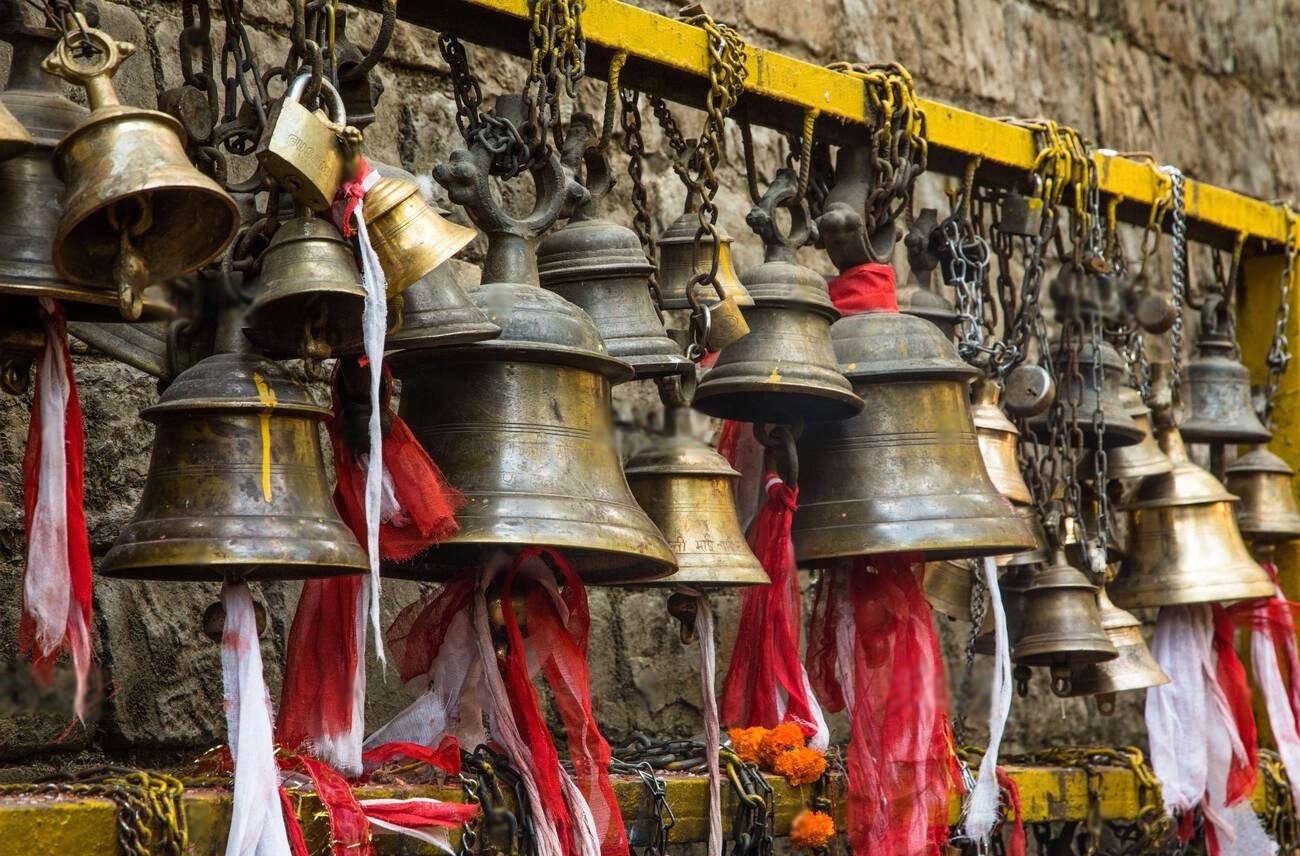
From $0
Price Varies from Group Size
Success
Here goes about why the success toast occurred.
 Activity Outline
Activity Outline
Arrival and Temple Grounds Exploration
Begin your visit in the early morning when the temple atmosphere is serene and contemplative. As you descend the stone steps into the ravine where Dakshinkali sits, take time to absorb the natural setting that frames this sacred space. The forested hills and flowing stream create a natural boundary that has historically separated the temple from the everyday world. Walk through the courtyard, observing the smaller shrines and sacred spots that complement the main temple. Highlight: Notice how the first light illuminates the temple complex, creating dramatic shadows and highlighting the traditional Nepali architectural elements.
Main Temple Darshan
Approach the main shrine for darshan (viewing of the deity). The temple houses the powerful image of Goddess Kali, depicted in her fierce form with multiple arms, a garland of skulls, and extended tongue. Remove your shoes before entering the inner sanctum, and observe local customs by bringing traditional offerings of flowers, red cloth, or fruits. A local priest can explain the proper way to present offerings and receive blessings. Highlight: Witness the morning aarti (ritual of lights) if your timing aligns with this ceremony, where oil lamps are waved before the goddess accompanied by the ringing of bells.
Sacred Stream and Meditation
Visit the sacred stream that runs alongside the temple, where devotees often perform ritual purification before worship. Find a quiet spot along the banks to sit and meditate, absorbing the natural serenity that complements the temple's intense spiritual energy. This contrast between Kali's fierce aspect and the peaceful natural setting represents the Hindu understanding of divinity's complex nature. Highlight: If comfortable, remove your shoes and wade into the shallow parts of the stream as locals do, feeling the cool mountain water that is considered purifying to both body and spirit.
Local Crafts and Offerings
Explore the small market area surrounding the temple where vendors sell traditional ritual items, handicrafts, and souvenirs. This is an excellent opportunity to learn about the various items used in Hindu worship and their symbolic significance. Consider purchasing marigold garlands or red bangles as souvenirs that connect to the temple's traditions. Highlight: Watch artisans creating traditional items like ritual oil lamps or Kali amulets, often using techniques passed down through generations.
Witnessing Ritual Offerings
If visiting on a Tuesday or Saturday, return to the temple when traditional animal sacrifices take place. While this aspect of worship can be challenging for some visitors, it represents an ancient tradition central to Dakshinkali's religious significance. Observe respectfully from a distance if preferred, noting the structured ritual elements that govern the practice. Highlight: Notice how the entire process follows specific protocols managed by temple attendants, with prayers and specific ritual actions marking each stage.
Community Feast
Following the sacrificial offerings, many devotees participate in community meals where the blessed meat (prasad) is shared. While visitors may not participate directly, observing this communal aspect reveals how religious practice extends beyond individual worship to strengthen community bonds. Highlight: The convivial atmosphere during these gatherings offers a glimpse into the social function of religious practices in Nepali culture.
Sunset Reflections
As the day winds down, find a vantage point on the hillside steps leading to the temple to watch how the changing light transforms the temple atmosphere. The fading daylight often creates a mystical ambiance as some devotees perform final prayers before the temple closes for the evening. Highlight: This quieter time offers an opportunity for personal reflection on the day's experiences and the various dimensions of spirituality expressed at Dakshinkali.
 Reviews
Reviews
 FAQs (Frequently Asked Questions)
FAQs (Frequently Asked Questions)
Your queries are answered.
Do I need to witness animal sacrifices when visiting Dakshinkali?
No. While animal sacrifices are central to the temple's traditions on Tuesdays and Saturdays, visitors can choose to visit on other days when these rituals do not take place. The temple's spiritual significance and atmospheric setting make it worth visiting regardless.
How should I prepare for a visit to Dakshinkali Temple?
Wear modest clothing covering shoulders and knees. Bring small denominations of Nepali rupees for offerings or purchasing ritual items. Consider bringing flowers or fruits as offerings if you wish to participate in worship. Plan your visit based on whether you want to experience the busier ritual days or quieter times.
Is Dakshinkali Temple only for Hindus?
While actively participating in rituals is primarily for Hindu worshippers, the temple welcomes respectful visitors of all backgrounds who are interested in learning about this aspect of Nepali culture and Hindu traditions.
How do I get to Dakshinkali from Kathmandu?
Public buses run regularly from Ratna Park in Kathmandu to Dakshinkali, especially on Tuesdays and Saturdays. The journey takes approximately 1-1.5 hours. Alternatively, taxis can be hired for the day, offering more flexibility and comfort, with the drive taking about 45 minutes.
What is the significance of animal sacrifice in Hindu worship?
In Hindu tradition, particularly relating to Goddess Kali, animal sacrifice represents the offering of life force (prana) to the deity. It symbolizes the devotee's willingness to surrender something valuable and the recognition of the goddess's power over life and death. The practice has ancient roots in Vedic traditions and continues at specific temples dedicated to certain deities.
Are there facilities for tourists at the temple?
Basic facilities include restrooms, small shops, and food stalls. However, the site is not as developed for tourism as some other religious attractions in the Kathmandu Valley. Consider bringing water and snacks, especially if planning an extended visit.
When is the most spectacular time to visit Dakshinkali?
During the Dashain festival (usually falling in September-October), Dakshinkali becomes exceptionally vibrant with increased devotional activities and larger crowds. This major festival represents the most culturally significant time to visit, though the experience can be overwhelming for some visitors.




